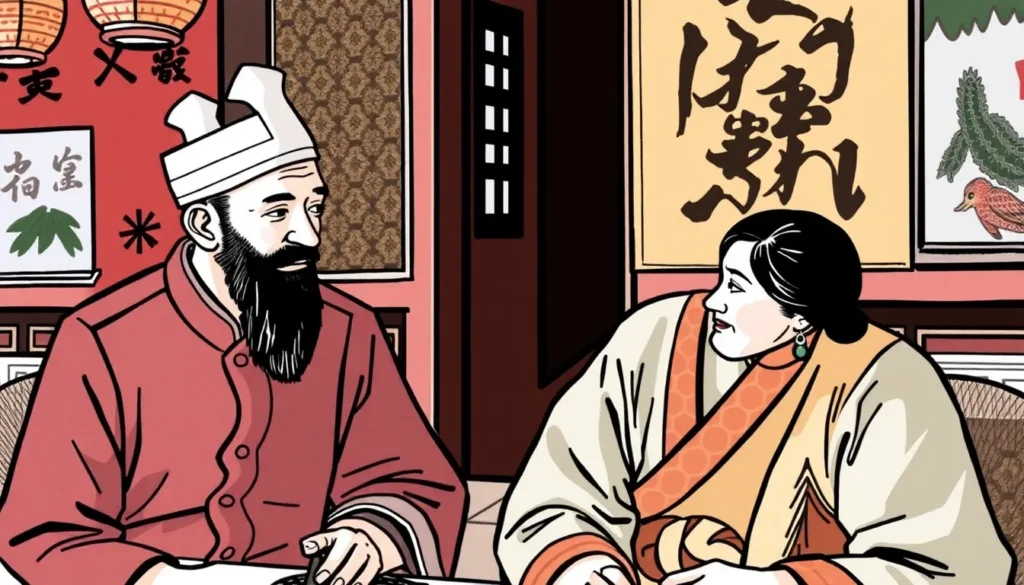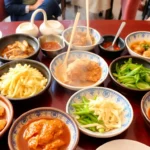Cultural Clashes: Storytelling in China

Traveling to a new country can be an exhilarating adventure filled with discoveries, but it can also bring unexpected surprises, especially when it comes to cultural differences. If you’ve ever wondered about the fascinating yet perplexing nuances of Chinese culture, you’re in for a treat. Let’s dive into some intriguing aspects of cultural shocks that can arise when visiting China, particularly in the realm of communication and social interactions.
Understanding cultural manifestations in China
Cultural manifestations in China are deeply rooted in centuries of history, tradition, and evolution. From architecture to cuisine, the richness of Chinese culture is evident in every aspect of daily life.
Chinese culture emphasizes the importance of family, respect for elders, and collective harmony. These principles shape interactions and social norms, making them distinct from those in Western cultures. Here are some key manifestations:
- Language and Dialects: Mandarin is the official language, but there are many regional dialects such as Cantonese and Shanghainese, which can be drastically different.
- Festivals: Celebrations like the Lunar New Year and the Mid-Autumn Festival reflect the rich traditions and values of the society.
- Art Forms: Traditional arts such as calligraphy, painting, and opera highlight the aesthetic values and historical narratives of China.
- Food: Chinese cuisine varies widely by region, demonstrating diverse cooking techniques and flavor profiles.
Understanding these cultural manifestations is essential for any traveler wishing to connect with locals and appreciate the depth of their heritage.
What is a cultural shock? Examples in the Chinese context
A cultural shock refers to the feelings of confusion and discomfort that one experiences when encountering a different culture. This phenomenon can manifest in various ways, especially in a country as unique as China.
Here are some common examples of cultural shocks that travelers often face when visiting China:
- Communication Styles: The directness or indirectness of conversations can vary significantly. In China, people often communicate in subtle ways, relying on context and non-verbal cues.
- Personal Space: The concept of personal space may differ; crowded places often mean close physical proximity, which can feel uncomfortable for those from cultures that value personal space.
- Dining Etiquette: The customs surrounding meals, such as sharing dishes and using chopsticks, can be surprising for newcomers.
These cultural shocks can be enlightening and provide an opportunity for personal growth and understanding.
Unique customs in Chinese culture
China is a land of rich traditions and customs that can seem strange or peculiar to outsiders. Understanding these customs can help bridge the gap between cultures and enhance the travel experience.
Some notable customs include:
- Gift Giving: In China, giving gifts is an important social gesture, but it's customary to avoid giving certain items, such as clocks, as they symbolize death.
- Respect for Elders: Elders are highly respected in Chinese society, and addressing them properly is crucial in social interactions.
- Holidays and Celebrations: Understanding the significance of major holidays and how they're celebrated can provide deeper insights into the culture.
These customs reflect the values of Chinese society and can be a source of joy and connection when recognized by visitors.
Exploring cultural movements in China
Cultural movements in China have played a pivotal role in shaping modern society. From traditional philosophies to contemporary art movements, these shifts reflect the dynamic nature of Chinese culture.
One of the most significant movements is the Cultural Revolution, which aimed to eliminate remnants of the "old society" and promote communist ideals. This period had lasting effects on art, education, and social structures.
Today, there is a resurgence of interest in traditional arts, with many young people embracing their heritage while blending it with modern influences. This fusion creates a unique cultural landscape that reflects both past and present.
For those seeking a firsthand account of cultural experiences in China, this video captures the essence of navigating cultural differences and the delightful surprises that come with living in a foreign culture.
The importance of learning local customs
Understanding and respecting local customs is vital for fostering positive interactions and experiences while traveling. When you take the time to learn about the local culture, you demonstrate respect and willingness to engage authentically.
Here are some tips for navigating cultural differences:
- Research Before Visiting: Familiarize yourself with common customs and etiquette to avoid unintentional faux pas.
- Observe Locals: Pay attention to how locals behave in social situations to learn appropriate responses.
- Ask Questions: Don't hesitate to ask locals about their customs; most people appreciate the interest and are happy to share.
Embracing the beauty of diversity
Every culture has its quirks and idiosyncrasies, and embracing these differences is what makes travel so enriching. In China, the blend of tradition and modernity creates a vibrant tapestry of experiences that are worth exploring.
By remaining open-minded and respectful, travelers can turn potential cultural shocks into meaningful connections, transforming their journey into a memorable adventure. As you explore the wonders of China, remember that each interaction is an opportunity to learn and grow.





Deja una respuesta